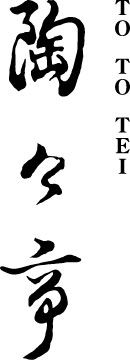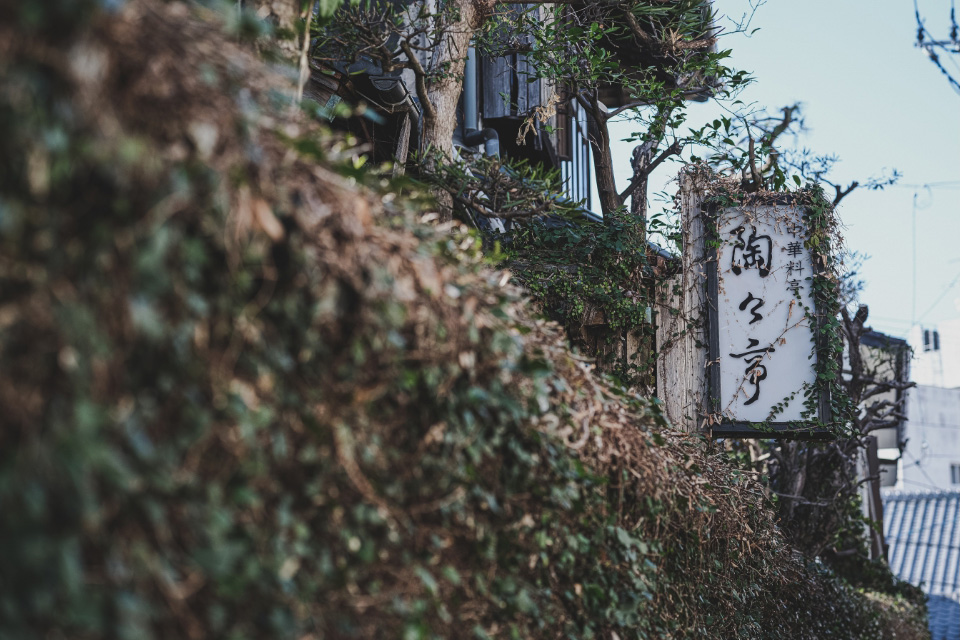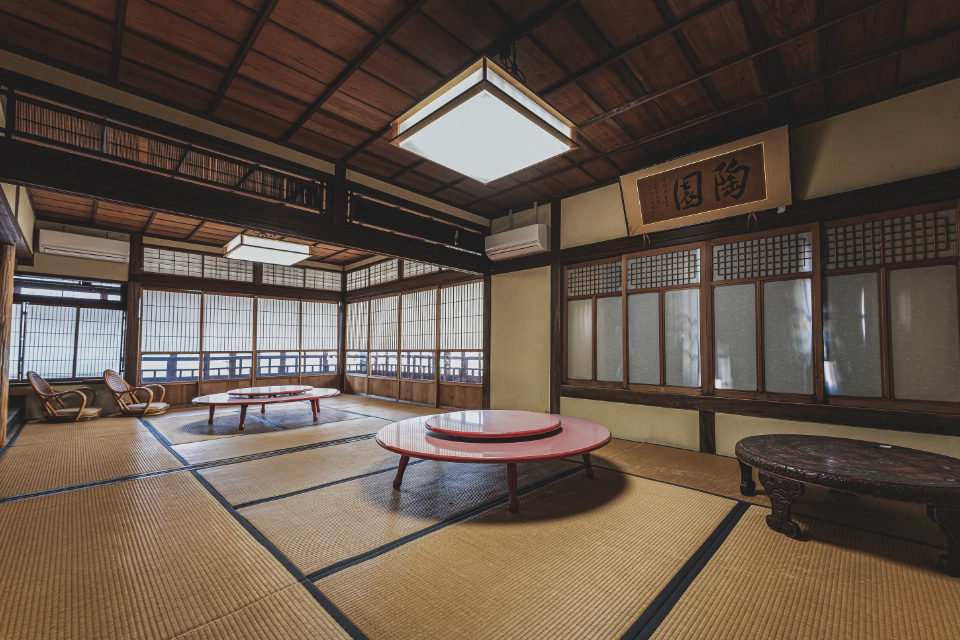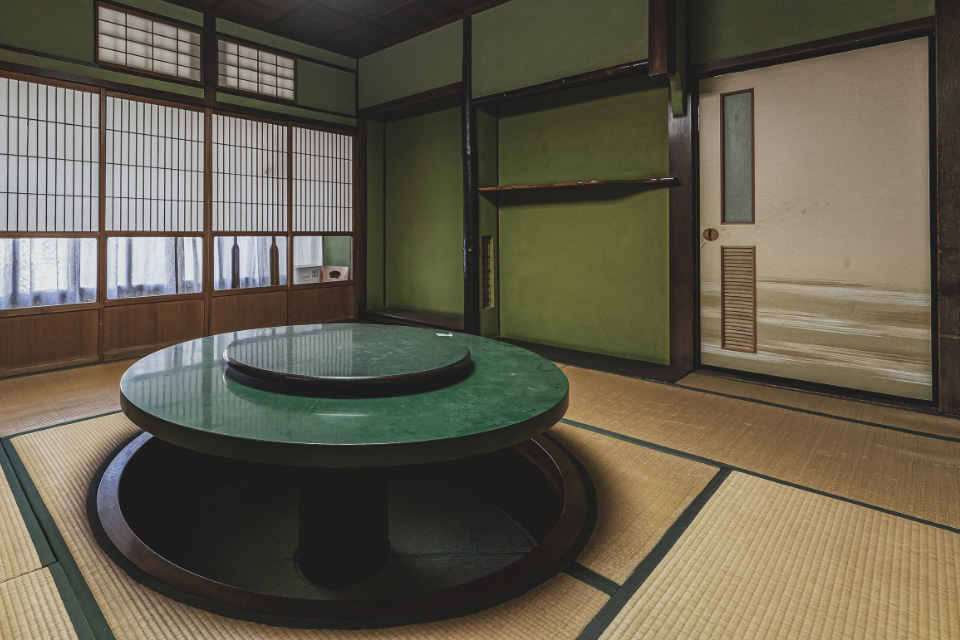-
About TOTOTEI
In 1689, when Nagasaki’s trade with China was at its peak, a number of residences were built in Kannaimachi to house the roughly 10,000 Chinese people who had stopped in (and eventually settled in) Japan from China. The bond between the Chinese people and Nagasaki residents grew stronger, and the dragon dances and Chinese dishes were passed on to the locals. Tototei is situated in Juninmachi, a town next to the quiet residential area of Kannaimachi. Around 1949, the late Meiji-era structure constructed in a Japanese-style was acquired and opened as “Chinese Restaurant Tototei.”
Located a short distance uphill from the bar district, Juninmachi has made a name for itself not only locally but also throughout Japan for its cuisine served in a relaxed atmosphere that is a world away from the hustle and bustle of the city. Among Shippoku cuisine, which features a round table filled with many dishes, Tototei offers Shippoku Chuka, which includes classic Chinese fare such as braised pork, ‘Hatoshi” or shrimp toast, sea cucumber, shark’s fin, swallow’s nest, and century eggs. It was said that Tototei was the only place where anyone could easily enjoy refreshing and elegant flavors. As the former proprietress of the restaurant recalls, “a couple who had not been to the restaurant for several decades came back to enjoy the space and the food as if to reaffirm its quality.” It is a place where many people have spent special and unforgettable moments.
-
History of architecture
The Tototei building was constructed in 1908 as a residence for the Aota family, who were traders at the time. Even in Nagasaki, where there are many old structures and long-standing businesses, buildings that are more than 100 years old are rare. The Tototei building was selected as a recipient for the “Nagasaki Cityscape Awards, Encouraging Prize.” This venerable Japanese-style building continues to make its presence felt in the ever-changing cityscape. The sequence in which the entranceway appears when one follows the stepping stones set into the jumbled cobblestones, and the high degree of perfection in the alcove and transoms are truly indicative of the architecture of a wealthy merchant family residence of the time.
The Chinese restaurant Tototei, which to the disappointment of many closed down in 2020, will be reborn as an auberge after being carefully renovated to add comfort and convenience while retaining the original atmosphere to the fullest degree, so that it will be cherished as an accommodation and restaurant for years to come. By fusing pure Japanese architecture with modern European furniture, we have created a refined ambiance that will serve as a hub for future exchanges, while allowing guests to experience history firsthand. A new chapter in history is about to begin.
-
Unique Wakaran culture
Nagasaki flourished as a center of Japanese trade during the Edo period. It was here that the Wakaran culture was born. “Wa” refers to Japan, “Ka” refers to China, and “Ran” refers to the Netherlands or Western cultures. During this period of isolation, only China and the Netherlands were allowed by the Shogunate to trade with Japan, and many foreign items, such as sugar and glasswork (precious goods at the time), entered Nagasaki. One of the outcomes of the trade interaction with China and the Netherlands was Shippoku Chuka, which wowed many gourmets visiting the Chinese restaurant Tototei. The city of Nagasaki is still home to many of the foods and traditions that developed from the Wakaran culture.
Since 1634, the Nagasaki Kunchi festival has been celebrated every year and provides an opportunity to experience Wakaran culture, which is a fusion of Japanese, Chinese, and Western cultures. The festival features local traditional events, Dutch-themed dances, and Chinese dragon dances, attracting crowds of people every year to the festival that blends three cultures. In terms of food, Nagasaki has become synonymous with dishes born from the Wakaran culture, such as Nagasaki Chanpon and Turkish Rice, in addition to Shippoku cuisine. Walking around the city, you can still witness strong elements of the traditional architecture of Europe and ancient China.











